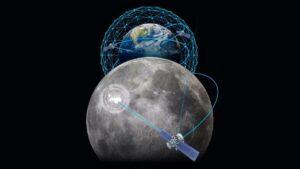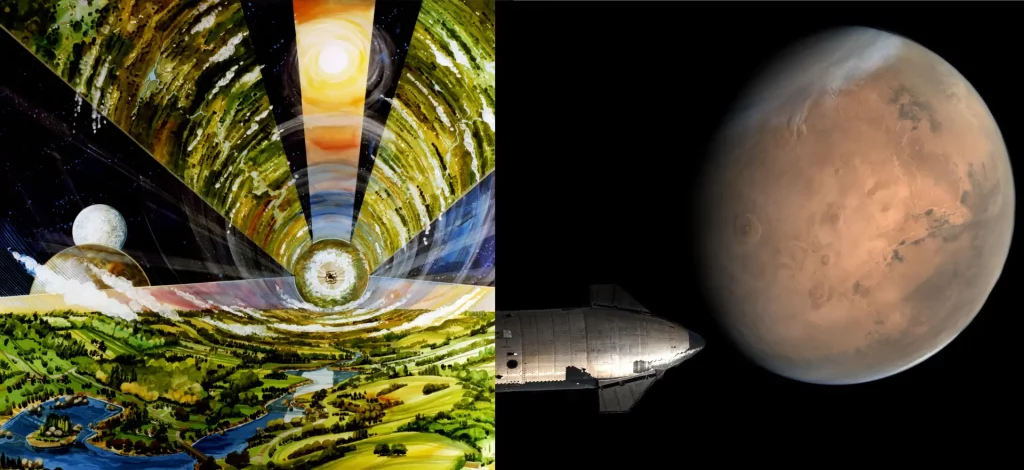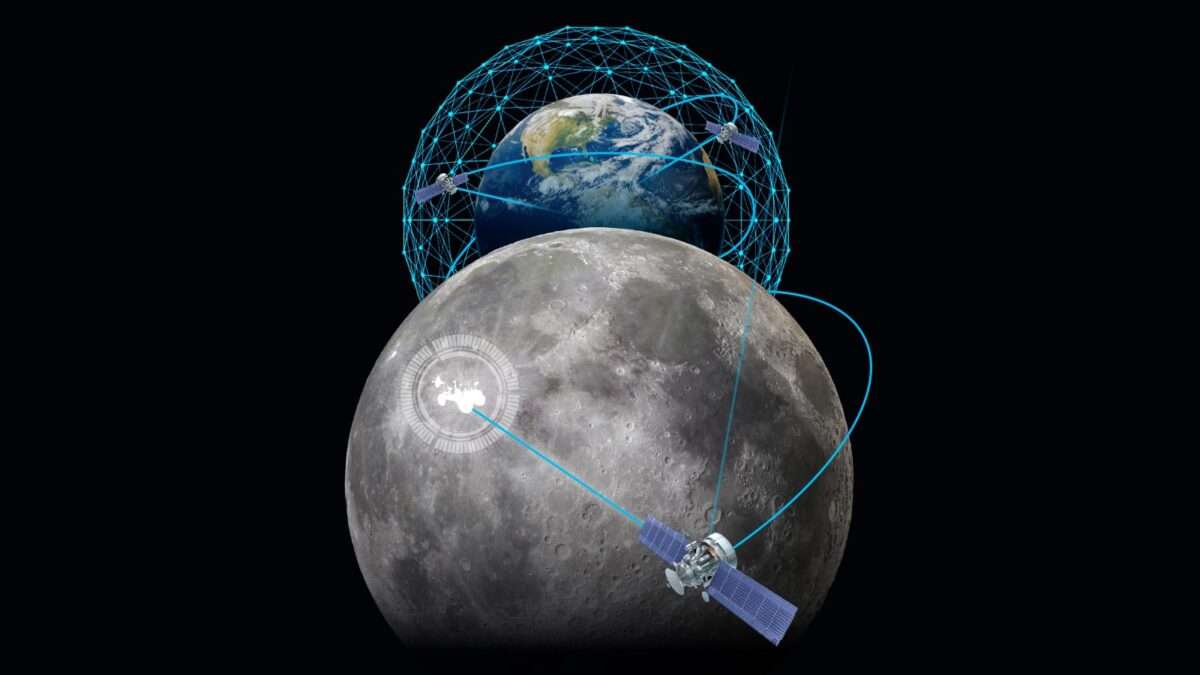The quest to establish lunar Wi-Fi marks a pivotal moment in humanity’s exploration of the cosmos. As we strive to extend our reach beyond Earth, the need for robust and reliable communication networks on the Moon becomes increasingly evident. With advancements in technology and a shared vision for the future, space agencies and commercial entities are collaborating to overcome the challenges of lunar connectivity and pave the way for unprecedented exploration and discovery.

Bridging Past and Present: From Apollo to Artemis
The legacy of the Apollo missions serves as a testament to human ingenuity and determination, yet the technological constraints of the past are starkly juxtaposed with the demands of the present. Today, as we embark on the Artemis program, which aims to return astronauts to the Moon and establish a sustainable lunar presence, the need for cutting-edge communication infrastructure has never been more pressing. With plans to land astronauts near the lunar South Pole, where challenges abound due to varied terrain and limited visibility of Earth, the importance of reliable wireless networks cannot be overstated.
Overcoming Lunar Challenges: Regolith and Terrain
Navigating the lunar landscape poses unique challenges, from the fine lunar dust, known as regolith, to the rugged terrain characterized by deep craters and towering peaks. Establishing wireless networks amidst such conditions requires innovative solutions and rigorous testing. NASA’s Desert Research and Technology Studies (Desert Rats) team, drawing upon the lessons of Apollo-era simulations, conducts field tests to assess the feasibility of wireless communication in lunar environments. However, the journey to lunar Wi-Fi extends beyond terrestrial simulations, as engineers grapple with the complexities of signal propagation and multipath interference in the lunar atmosphere.
Toward Lunar Connectivity: 4G, 5G, and Beyond
The quest for lunar Wi-Fi heralds a new era of connectivity, fueled by advancements in 4G and 5G technology adapted for the lunar surface. NASA’s Lunar Third Generation Partnership (3GPP) project, in collaboration with industry partners, aims to deploy wireless systems capable of withstanding the harsh lunar environment. Through rigorous testing and collaboration with commercial entities like Nokia Bell Labs, NASA seeks to establish a cellular network on the Moon, facilitating seamless communication between astronauts, rovers, and ground stations.
A Collaborative Future: Partnerships and Progress
As we chart a course towards lunar connectivity, international collaboration plays a pivotal role in driving progress. Initiatives like the European Space Agency’s (ESA) Moonlight program and NASA’s Lunar Communications Relay and Navigation Systems project underscore the importance of collective effort in advancing lunar exploration. With each mission and technological breakthrough, we move closer to realizing a future where lunar Wi-Fi is not just a possibility but a reality, enabling unprecedented scientific discovery and exploration beyond Earth’s boundaries.

Navigating Lunar Terrain: Challenges and Solutions
The diverse topography of the Moon presents formidable obstacles to establishing reliable communication networks. From the rugged peaks of the lunar highlands to the vast plains of ancient lava flows, engineers must contend with a myriad of geological features that impact signal propagation and network performance. Through innovative modeling and simulation techniques, researchers seek to identify optimal locations for lunar base stations and relay satellites, ensuring seamless connectivity across the lunar surface.
Leveraging Earthly Technologies: Adaptation for Lunar Environments
While the principles of terrestrial communication technology provide a foundation for lunar Wi-Fi, adapting these systems for the lunar environment presents unique technical challenges. Extreme temperature variations, radiation exposure, and the abrasive lunar regolith demand robust engineering solutions to ensure the reliability and longevity of lunar communication infrastructure. By harnessing the expertise of interdisciplinary teams and leveraging advancements in materials science and space technology, engineers endeavor to create resilient communication networks capable of withstanding the rigors of lunar exploration.
Enabling Scientific Discovery: The Role of Lunar Connectivity
Beyond facilitating astronaut communication and mission control operations, lunar Wi-Fi holds the key to unlocking new frontiers in scientific research and exploration. From monitoring lunar seismic activity to conducting remote experiments and observations, a network of interconnected lunar nodes promises to revolutionize our understanding of the Moon and its place in the cosmos. By enabling real-time data transmission and collaboration among researchers worldwide, lunar connectivity serves as a catalyst for scientific discovery and innovation on a global scale.
A New Lunar Era: Enhancing Connectivity Beyond Earth
The quest to establish lunar Wi-Fi marks a pivotal moment in humanity’s exploration of the cosmos. As we strive to extend our reach beyond Earth, the need for robust and reliable communication networks on the Moon becomes increasingly evident. With advancements in technology and a shared vision for the future, space agencies and commercial entities are collaborating to overcome the challenges of lunar connectivity and pave the way for unprecedented exploration and discovery.
Bridging Past and Present: From Apollo to Artemis
The legacy of the Apollo missions serves as a testament to human ingenuity and determination, yet the technological constraints of the past are starkly juxtaposed with the demands of the present. Today, as we embark on the Artemis program, which aims to return astronauts to the Moon and establish a sustainable lunar presence, the need for cutting-edge communication infrastructure has never been more pressing. With plans to land astronauts near the lunar South Pole, where challenges abound due to varied terrain and limited visibility of Earth, the importance of reliable wireless networks cannot be overstated.
Overcoming Lunar Challenges: Regolith and Terrain
Navigating the lunar landscape poses unique challenges, from the fine lunar dust, known as regolith, to the rugged terrain characterized by deep craters and towering peaks. Establishing wireless networks amidst such conditions requires innovative solutions and rigorous testing. NASA’s Desert Research and Technology Studies (Desert Rats) team, drawing upon the lessons of Apollo-era simulations, conducts field tests to assess the feasibility of wireless communication in lunar environments. However, the journey to lunar Wi-Fi extends beyond terrestrial simulations, as engineers grapple with the complexities of signal propagation and multipath interference in the lunar atmosphere.
Toward Lunar Connectivity: 4G, 5G, and Beyond
The quest for lunar Wi-Fi heralds a new era of connectivity, fueled by advancements in 4G and 5G technology adapted for the lunar surface. NASA’s Lunar Third Generation Partnership (3GPP) project, in collaboration with industry partners, aims to deploy wireless systems capable of withstanding the harsh lunar environment. Through rigorous testing and collaboration with commercial entities like Nokia Bell Labs, NASA seeks to establish a cellular network on the Moon, facilitating seamless communication between astronauts, rovers, and ground stations.
A Collaborative Future: Partnerships and Progress
As we chart a course towards lunar connectivity, international collaboration plays a pivotal role in driving progress. Initiatives like the European Space Agency’s (ESA) Moonlight program and NASA’s Lunar Communications Relay and Navigation Systems project underscore the importance of collective effort in advancing lunar exploration. With each mission and technological breakthrough, we move closer to realizing a future where lunar Wi-Fi is not just a possibility but a reality, enabling unprecedented scientific discovery and exploration beyond Earth’s boundaries.
Conclusion: Pioneering a New Frontier
The journey to establish lunar Wi-Fi represents a remarkable feat of human ingenuity and collaboration. From the historic achievements of the Apollo missions to the ambitious goals of the Artemis program, we stand on the brink of a new era in space exploration. As we venture further into the cosmos, the establishment of robust communication networks on the Moon will serve as a cornerstone for future endeavors, enabling astronauts to connect with each other and with humanity back on Earth. Through innovation, perseverance, and cooperation, we are forging a path towards a future where the boundaries of space are no longer limits but gateways to new horizons.
Related Topics:
Related Topics:
- https://www.sciencedirect.com/science/article/abs/pii/S0094576522005628
- https://www.sciencedirect.com/topics/earth-and-planetary-sciences/lunar-cycle
- https://www.micro2media.com/planet-on-the-brink-un-report-warns-of-record-breaking-heat-and-climate-chao
- https://www.micro2media.com/move-climate-action-forward-faster-together-with-2024-climate-ambition-accelerator/
